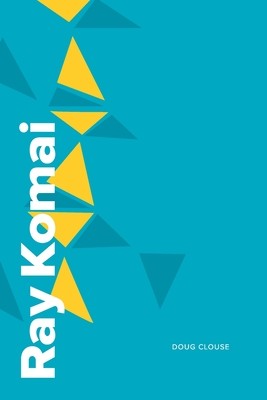
- We will send in 10–14 business days.
- Author: Doug Clouse
- Publisher: INDEPENDENTLY PUBLISHED
- ISBN-10: 1074361792
- ISBN-13: 9781074361792
- Format: 15.2 x 22.9 x 1.2 cm, softcover
- Language: English
- SAVE -10% with code: EXTRA
Reviews
Description
Second Edition.
With radiant talent, determined industry, and a cheerful disposition, designer Ray Komai built an unusual career. After forced removal to Manzanar, the World War II incarceration camp for Japanese-Americans, the Los Angeles native designed notable furniture, textiles, and magazines in New York City in the 1940s, 50s, and 60s. He left New York to design exhibitions and publications for the United States Information Service, promoting the country that had once put him behind barbed wire. Komai left behind beautiful work that provides insight into the relationship between design and nationalism.
This beautifully designed book, richly filled with full-color reproductions of Ray Komai's work and rarely seen photographs of his life, is available as a paperback and an e-book with with panel-view functionality.
The second edition features a new cover design and includes a small number of text revisions and additions, as well as new photographs of Komai's textiles, his famous armchair, and an exhibition about Ray Komai at Fordham University in New York.
EXTRA 10 % discount with code: EXTRA
The promotion ends in 19d.06:54:37
The discount code is valid when purchasing from 10 €. Discounts do not stack.
- Author: Doug Clouse
- Publisher: INDEPENDENTLY PUBLISHED
- ISBN-10: 1074361792
- ISBN-13: 9781074361792
- Format: 15.2 x 22.9 x 1.2 cm, softcover
- Language: English English
Second Edition.
With radiant talent, determined industry, and a cheerful disposition, designer Ray Komai built an unusual career. After forced removal to Manzanar, the World War II incarceration camp for Japanese-Americans, the Los Angeles native designed notable furniture, textiles, and magazines in New York City in the 1940s, 50s, and 60s. He left New York to design exhibitions and publications for the United States Information Service, promoting the country that had once put him behind barbed wire. Komai left behind beautiful work that provides insight into the relationship between design and nationalism.
This beautifully designed book, richly filled with full-color reproductions of Ray Komai's work and rarely seen photographs of his life, is available as a paperback and an e-book with with panel-view functionality.
The second edition features a new cover design and includes a small number of text revisions and additions, as well as new photographs of Komai's textiles, his famous armchair, and an exhibition about Ray Komai at Fordham University in New York.


Reviews